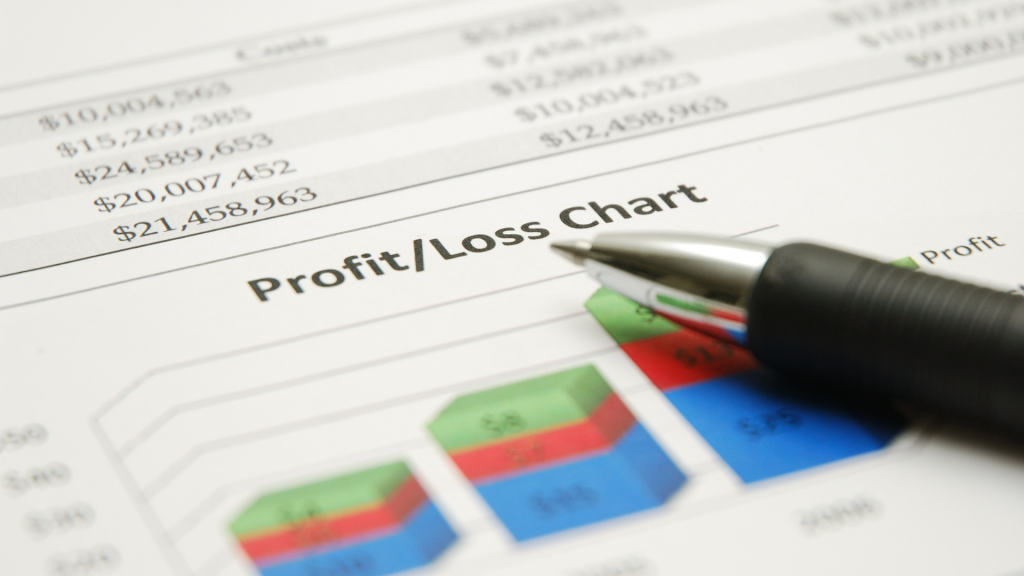ROI, KPI, MoM; if you’re a new business owner, a lot of these acronyms can sound like mumbo-jumbo. However, as you know, the words behind the acronyms can be key indicators of your business’ success, with one of those key indicators being your business’s Profit and Loss (P&L) statement.
A P&L statement is an essential document that shows in black and white whether your business is making or losing money. However, if you’ve never put a P&L statement together, it can seem pretty daunting. Thankfully, we’ve put together a few points to help you learn more about what this statement stands for, when you’ll need one, and top tips for putting together your business’ first P&L statement.
What is a P&L Statement?
A Profit and Loss statement (P&L) is a report that provides a snapshot of your business’ overall revenue, expenses, and profits and losses. A P&L statement shows banks, lenders, and investors your company’s ability to generate sales, manage expenses, and create profits.
Typically a P&L statement shows a total for the year, but can be broken down into monthly or quarterly periods, as well. Unlike a balance sheet, which dives deeper into your company’s assets, liabilities, equity, and debts, a P&L statement is considered to be the most important because it shows your overall ability to make a profit (or not).
A P&L statement is made up of two parts: income earned and expenses. And, while every business’ P&L will differ a bit based on your business and overall sales model, they all contain five core components:
- Revenue (Sales): This is your non-operating revenue, meaning total revenue earned without allocating for business operational expenses.
- Cost of Goods Sold (COGS): This is the total cost of your products and/or services.
- Gross Profit: This is your net revenue, excluding any costs of sales. To find this number, subtract your COGS (item #2) from your revenue (item #1).
- Expenses: This line item includes any administrative, general and operational expenses related to running your business (ie: rent, utilities, payroll).
- Net Profit: Your net profit represents the total amount earned after deducting all expenses. To calculate net profit, subtract your expenses (item #4) from your gross profit (item #3).
When You May Need a P&L Statement
It’s worth noting that, while publicly traded companies are required to prepare and file P&L statements with the SEC for investors, analysts, and regulators, small businesses and private companies are not required to put P&L statements together. However, by neglecting your business’ profits and losses, you could be setting yourself up for financial failure and risking over-investing on an under-delivering business model.
If you’re a sole proprietor, it’s a good idea to have a P&L statement ready in the case that you’re required to submit it to the IRS for tax purposes. Additionally, if you’re self-employed and are intending to apply for financing or additional capital in the near future, you may be asked to provide a P&L as part of your loan application. By keeping a P&L statement and updating it at least quarterly, you’ll be helping your future self secure financing faster, without having to scramble numbers together at the last minute.
If you’re ready to set up your business’ P&L statement but need some help, check out these free templates, and always consult with a financial advisor if you’re unsure of anything – the future of your business could depend on it!
LEGAL DISCLAIMER
The opinions expressed in this post are for informational purposes only. To determine the best financing for your personal circumstances and goals, we advise you to consult with a licensed advisor.
Post Disclaimer
The information contained in this post is for general information purposes only. The information is provided by FinanceOpinion.net and while we endeavor to keep the information up to date and correct, we make no representations or warranties of any kind, express or implied, about the completeness, accuracy, reliability, suitability or availability with respect to the website or the information, products, services, or related graphics contained on the post for any purpose.

